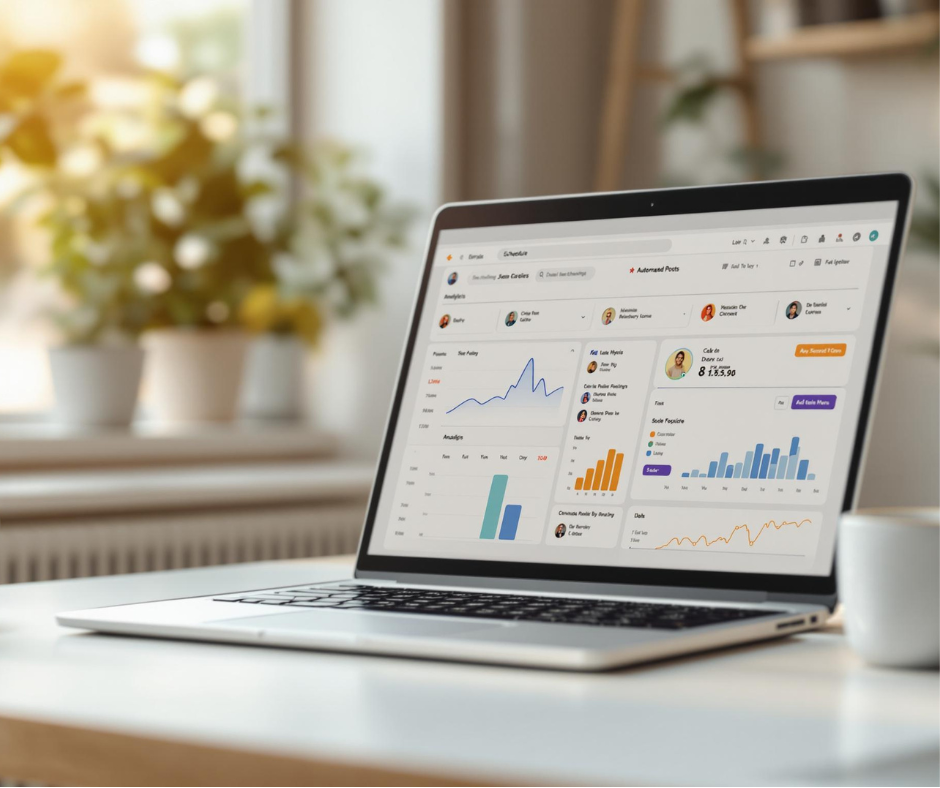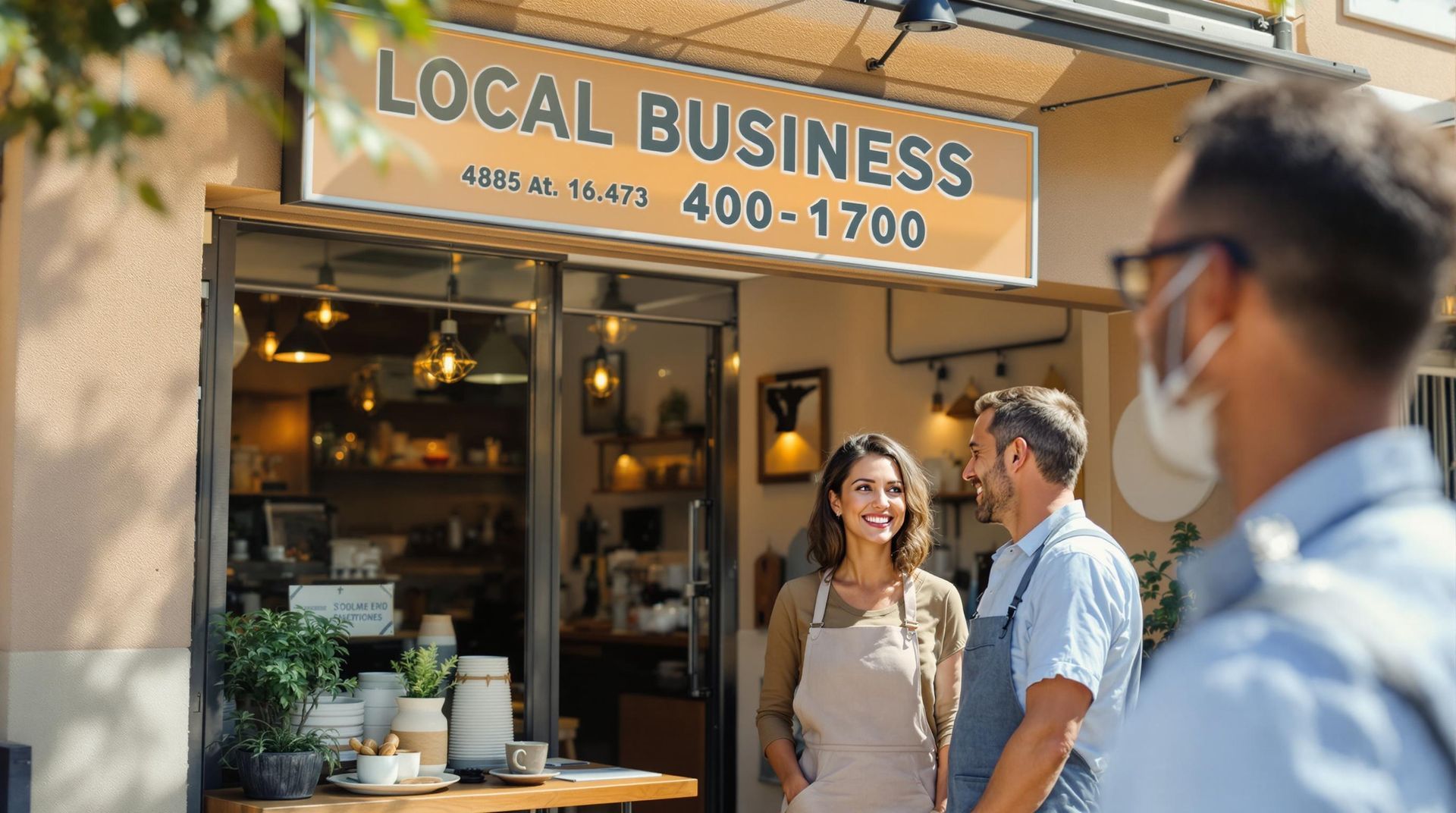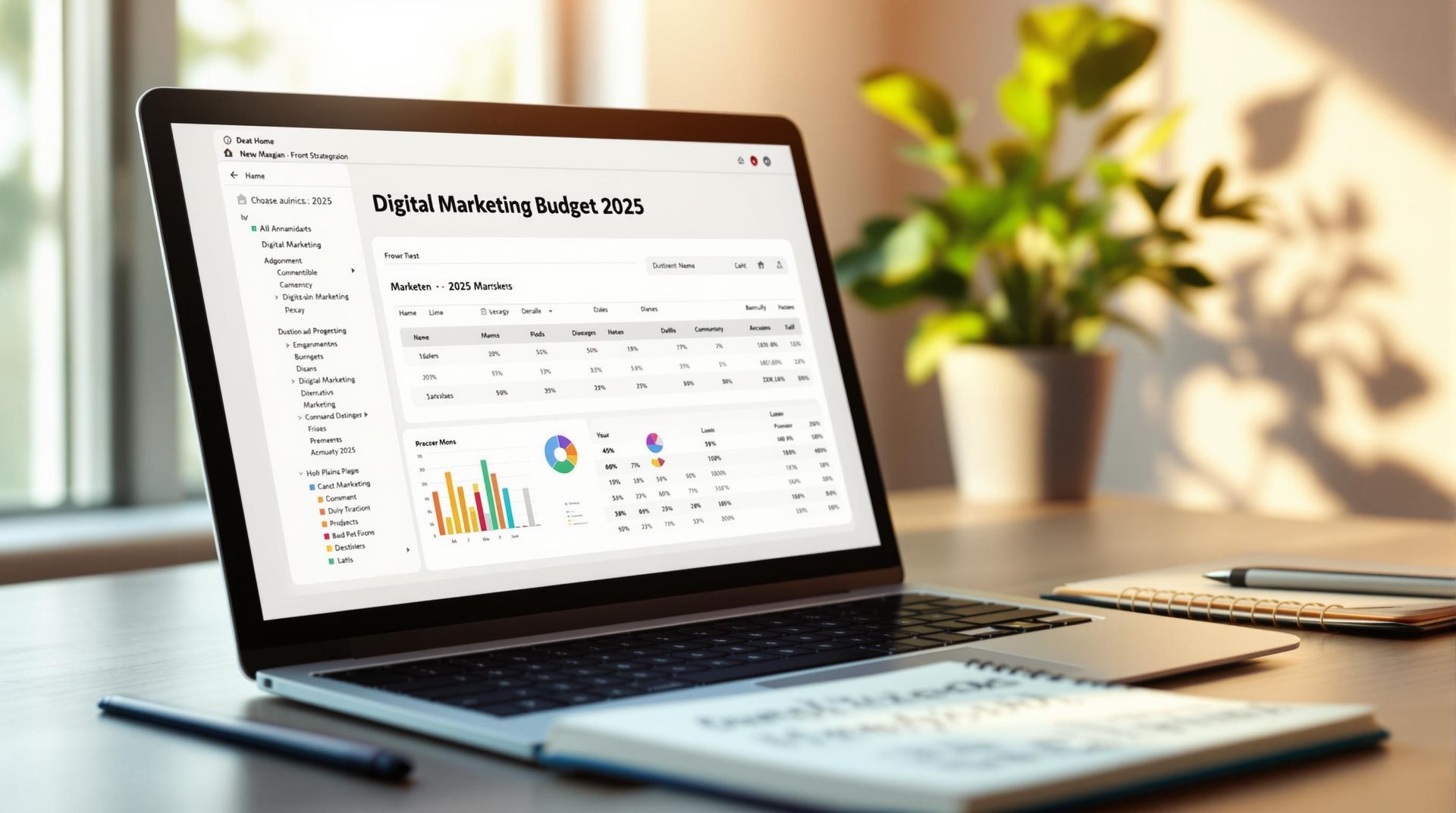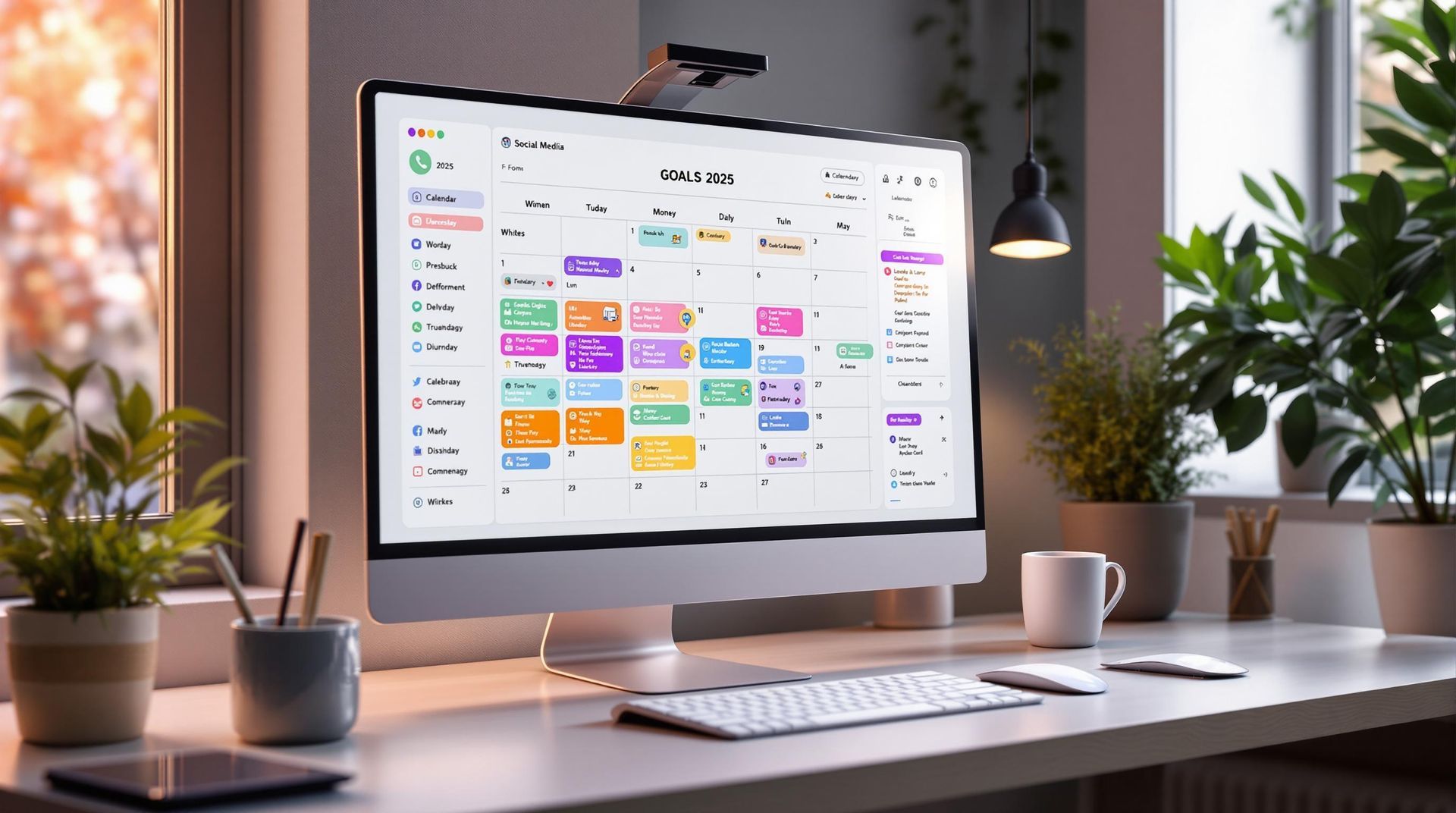SEO Checklist: 12 Steps to Improve Search Rankings
SEO Checklist: 12 Steps to Improve Search Rankings
Want to boost your Tampa business's visibility on Google? Here's your no-nonsense guide to climbing those search rankings:
- Find the right keywords
- Fix site problems
- Write better content
- Optimize page titles and descriptions
- Improve image SEO
- Make your site user-friendly
- Add schema markup
- Check content quality
- Build quality links
- Secure your site
- Improve local search presence
- Track your progress
Why care about SEO? 49% of marketers say it gives better ROI than any other digital marketing channel. For Tampa businesses, good SEO means more local customers finding you online.
This checklist covers everything from keyword research to technical tweaks. Follow these steps, and you'll be on your way to better rankings and more Tampa customers knocking at your door.
Remember: SEO isn't a one-time fix. It's an ongoing process. But stick with it, and you'll see results.
Ready to dive in? Let's get your Tampa business climbing those search rankings.
Related video from YouTube
SEO Basics
Let's talk about what makes websites rank and what search engines want to see. This stuff is key for Tampa businesses aiming to boost their online presence.
What Makes Sites Rank
Google uses a ton of factors to decide which sites show up first in search results. We don't know everything about their secret recipe, but we do know a few key ingredients:
Content That Rocks: Google loves websites that offer real value to readers. Think of a Tampa restaurant's site. One with mouth-watering food pics, detailed menu descriptions, and info about where they source ingredients? That's going to outrank a bare-bones site with just an address and phone number.
Happy Visitors: How people interact with your site tells Google a lot. Here's what matters:
- Speed: If your Tampa business site takes forever to load, half your visitors might bounce before they even see it.
- Mobile-Friendly: Most people browse on their phones these days. If your site looks wonky on mobile, you're in trouble.
- Sticky Content: The longer people hang around, the more Google thinks, "Hey, this must be good stuff!"
Links from the Cool Kids: When other respected websites link to you, it's like they're giving you a thumbs up. If the Tampa Bay Times mentions your business in an article? That's gold.
What Search Engines Need
To get your Tampa business site ranking, search engines are looking for:
1. Easy to Explore: Make sure search engine bots can easily crawl through your site. Fix any broken links and use a clear sitemap.
2. Easy to Understand: Help search engines figure out what your content is about. Use the right tags and data structure.
3. On-Point Content: Your content needs to match what people are searching for. If someone's looking for "Tampa's best seafood", your seafood joint's website better deliver the goods.
4. Locked Down: Use HTTPS encryption. Google's been big on security for years now.
5. Fresh and Tasty: Keep your site updated. Blog about local Tampa events, new services, whatever keeps things current.
"Google's algorithms consider hundreds of factors to decide which websites offer the most value to users." - Mike Khorev, Growth Marketing Consultant
To nail all this, focus on building a site that's easy to use and packed with good info. Use tools like Google Search Console to keep an eye on how you're doing. And remember, SEO isn't a "set it and forget it" deal. It's an ongoing process.
Tools You Need for SEO
To boost your Tampa business's search rankings, you need the right SEO tools. Let's look at some must-haves to track progress and fix site issues.
Traffic Tracking Tools
Google Analytics is the go-to for measuring website performance. It's free and packed with data about your visitors. Here's why it's a must:
- See who's on your site right now
- Find out where your traffic comes from
- Learn which pages are hits and how long people stick around
Setting up Google Analytics is easy:
- Sign up for a free account
- Add a small code snippet to your site
- Start tracking key metrics like:
- Organic traffic
- Bounce rate
- Average time on site
- Conversion rates
Pro tip: Set up goals in Google Analytics to track specific actions, like newsletter sign-ups or contact form submissions. This helps measure your SEO ROI.
Site Check Tools
While Google Analytics shows visitor behavior, you need other tools to spot and fix technical SEO issues.
Screaming Frog
This tool crawls your site like a search engine, finding potential problems. The free version scans up to 500 URLs - perfect for most Tampa businesses.
Screaming Frog helps you:
- Spot broken links and redirect chains
- Find duplicate content
- Check for missing meta descriptions and title tags
- Analyze your site structure
SEMrush
SEMrush is an SEO Swiss Army knife. It's paid (starting at $129.95/month) but offers a ton of features:
- Keyword research
- Site audits
- Position tracking
- Backlink analysis
"SEMrush is like having an entire SEO team at your fingertips. It's saved us countless hours and helped us identify opportunities we would have missed otherwise." - Allen Fetters, Founder of AWhitney Digital Marketing
Elevate Your Digital Presence
Partner with AWhitney Digital Marketing for expert SEO, targeted PPC campaigns, and comprehensive digital strategies to boost your business growth.
12 Steps to Better Search Rankings
Want to boost your Tampa business's Google visibility? Here's how to climb those search rankings and attract more local customers.
1. Find the Right Keywords
Identify keywords that match your Tampa customers' searches. Use Semrush or Ahrefs to find long-tail keywords with high search intent but lower competition.
Instead of "Tampa restaurant", try "best seafood restaurant in Tampa Bay" or "family-friendly Italian eatery in Ybor City."
2. Fix Site Problems
A slow website can tank your SEO. Focus on:
- Mobile optimization: Over 54% of global traffic comes from mobile devices. Make sure your site looks great on smartphones.
- Page speed: Aim for load times under 3 seconds. Use Google PageSpeed Insights to spot and fix speed issues.
3. Write Better Content
Quality content rules. Use clear headers (H1, H2, H3) and internal linking to connect related topics. If you run a Tampa gym, create guides on "Best Post-Workout Meals in Tampa" or "Top Running Trails in Tampa Bay."
4. Fix Page Titles and Descriptions
Craft compelling titles and meta descriptions with your target keywords. For example:
Title: "Top-Rated Tampa Bay Seafood Restaurant | Ocean's Bounty" Description: "Savor fresh, local seafood at Ocean's Bounty. Voted Tampa's best seafood restaurant 3 years running. Book your table now!"
5. Optimize Images
Don't ignore your visuals:
- Use descriptive file names (e.g., "tampa-skyline-sunset.jpg" not "IMG_001.jpg")
- Add alt text to help search engines understand your images
- Compress images to speed up load times without losing quality
6. Make Sites Easy to Use
A user-friendly site keeps visitors engaged, signaling quality to Google. Focus on:
- Clear navigation menus
- Logical site structure
- Fast loading times (aim for under 2.5 seconds)
7. Add Schema Markup
Schema markup helps search engines understand your content. For a Tampa restaurant, include:
- Menu items
- Business hours
- Customer reviews
This can lead to rich snippets in search results, potentially boosting your click-through rates.
8. Check Content Quality
Make sure your content aligns with Google's E-E-A-T guidelines (Experience, Expertise, Authoritativeness, Trustworthiness). If you're a Tampa real estate agent, show off your local market knowledge and include client testimonials to build trust.
9. Build Quality Links
Earn backlinks from reputable Tampa-based websites. Try:
- Guest posting on local blogs
- Getting listed in Tampa business directories
- Partnering with other local businesses for cross-promotion
10. Secure Your Site
Security is a must. Ensure your site has:
- HTTPS encryption
- Up-to-date SSL certificate
- Properly configured robots.txt file
- XML sitemap for easy indexing
11. Improve Local Search
For Tampa businesses, local SEO is key:
- Claim and optimize your Google Business Profile
- Keep your NAP (Name, Address, Phone) consistent across all online listings
- Encourage customer reviews on Google and other platforms
12. Track Your Progress
Use Google Analytics and Google Search Console to monitor your rankings and traffic. Watch:
- Organic traffic growth
- Keyword rankings
- Click-through rates
- Bounce rates
"SEO is an excellent form of inbound marketing, where the consumer has a need and finds you for the solution." - Greg Bernhardt, SEO Strategist at Shopify
When to Do What
SEO isn't a set-it-and-forget-it deal. It's an ongoing process that needs regular attention. Here's a breakdown of when to tackle key SEO tasks to boost your Tampa business's search rankings:
Daily Tasks
Spend 15-30 minutes each day on these quick hits:
- Check your keyword rankings
- Look at your site analytics
- Make sure your site's up and running smoothly
Weekly Tasks
Set aside a few hours each week to:
- Improve your existing content
- Keep an eye on what your competitors are up to
- Track your backlinks
Monthly Tasks
Once a month, take a day to:
- Review and adjust your SEO strategy
- Do a deep dive into your site's technical health
- Analyze how your content's performing
Quarterly Tasks
Every three months, block out a week for:
- A big-picture look at your SEO strategy
- A thorough technical check-up of your site
- A review of your link building efforts
"SEO should be thought of at all times in relation to your digital marketing efforts." - OJE Technology
Yearly Tasks
Once a year, step back and focus on:
- How you did over the past year
- A top-to-bottom content review
- Brushing up on the latest SEO trends
Keep in mind, how often you do these tasks might change based on your business size and how competitive your industry is. A Tampa tech startup might need to check in more often than a local bakery.
For example, if you run a Tampa real estate blog, you might update your "Tampa Housing Market Trends" post monthly to keep it fresh. Or if you've got a Tampa restaurant, you'd want to update your menu pages whenever you change your offerings.
The key is to stay on top of things. SEO isn't a one-and-done deal - it's about consistently tweaking and improving to stay ahead of the game.
Next Steps
You've gone through our 12-step SEO checklist. Now it's time to put these strategies to work for your Tampa business. Here's how to keep the ball rolling:
Prioritize Your Efforts
Start with the easy wins. For many Tampa businesses, this means:
- Optimizing your Google Business Profile
- Speeding up your website
- Creating content with a local focus
"Check your site's performance with Google PageSpeed Insights. Shoot for a score of 90+ on mobile devices." - SEO Pro Tip
Set Realistic Goals
SEO isn't an overnight fix, but it pays off. Set achievable targets:
- Boost organic traffic by 20% in 3 months
- Get on the first page for 5 local Tampa keywords within 6 months
Monitor and Adjust
Use Google Analytics and Search Console to track progress. Keep an eye on:
- Organic traffic growth
- Keyword rankings
- Click-through rates
- Bounce rates
The more you measure, the better you can manage. Regular checks help you spot what's working and what needs a tweak.
Stay Up-to-Date
SEO best practices change fast. Keep yourself in the loop:
- Follow top SEO blogs like Moz and Search Engine Journal
- Hit up local Tampa digital marketing meetups or webinars
- Think about getting some professional SEO training
Leverage Local Opportunities
Tampa businesses have a local SEO edge. Make it count:
- Get listed in Tampa-specific directories like TampaBay.com's business listing
- Team up with other local businesses for promotion and links
- Write about Tampa events, attractions, and news
"Local SEO is a game-changer for Tampa businesses. We've seen clients double their foot traffic within months of implementing a solid local SEO strategy." - Allen Fetters, Founder of AWhitney Digital Marketing
Consider Professional Help
Feeling stuck? Not seeing results? It might be time to call in the pros. Tampa has some solid SEO agencies that can boost your online game.
Take AWhitney Digital Marketing. They offer full SEO services starting at $889/month with a $149 setup fee. Sounds pricey? Think about the potential return:
- More visibility in local searches
- Better leads coming to your site
- Higher conversion rates from organic traffic
Keep Creating Quality Content
Content is still king in SEO. Keep pumping out top-notch, Tampa-focused content that answers your customers' questions and shows off your know-how. It'll help your rankings and make you a local authority.
FAQs
What is the ultimate SEO checklist for 2024?
The ultimate SEO checklist for 2024 covers all the key areas you need to focus on:
1. Keyword Research
Use tools like the Keyword Difficulty Checker to find out how hard it is to rank for specific keywords.
2. Competitor Analysis
Dig into your competitors' top pages, keywords, and backlinks. This info can shape your strategy.
3. SERP Analysis
Look at what's ranking well for your target keywords. What are those pages doing right?
4. Technical SEO
Make sure search engines can crawl your site, it loads fast, and works well on mobile.
5. On-Page SEO
Optimize your content, meta tags, and internal links.
6. Content Creation
Create top-notch, original content that gives users what they're looking for.
7. Link Building
Focus on getting backlinks from trustworthy sites.
"Following an SEO checklist makes it easier to keep track of what you need to do to boost your site's performance."
When done right, this checklist has helped some businesses grow their organic traffic by up to 189.12% in just 30 days. Not too shabby!
How to get a higher Google ranking?
Want to climb up those Google rankings? Here's what you need to do:
1. Create Link-Worthy Content
Publish stuff that's so good, other sites WANT to link to it. Google loves backlinks, so this is huge.
2. Nail User Intent
Make sure your content gives people what they're actually searching for. This keeps users happy, and Google notices.
3. Tech It Up
Speed up your site, make it mobile-friendly, and use HTTPS. Google cares about user experience.
4. Build Quality Backlinks
Get links from respected sites in your niche. It's like getting a vote of confidence from the cool kids.
5. On-Page SEO
Use your keywords in titles, headers, and throughout your content - but keep it natural.
6. Boost Your E-A-T
That's Expertise, Authoritativeness, and Trustworthiness. Show off your credentials and create detailed "About Us" pages.
"The more backlinks your site has, the higher you may be able to rank. And the best way to build backlinks to your site? Publish content that people will actually link to." - WordStream









